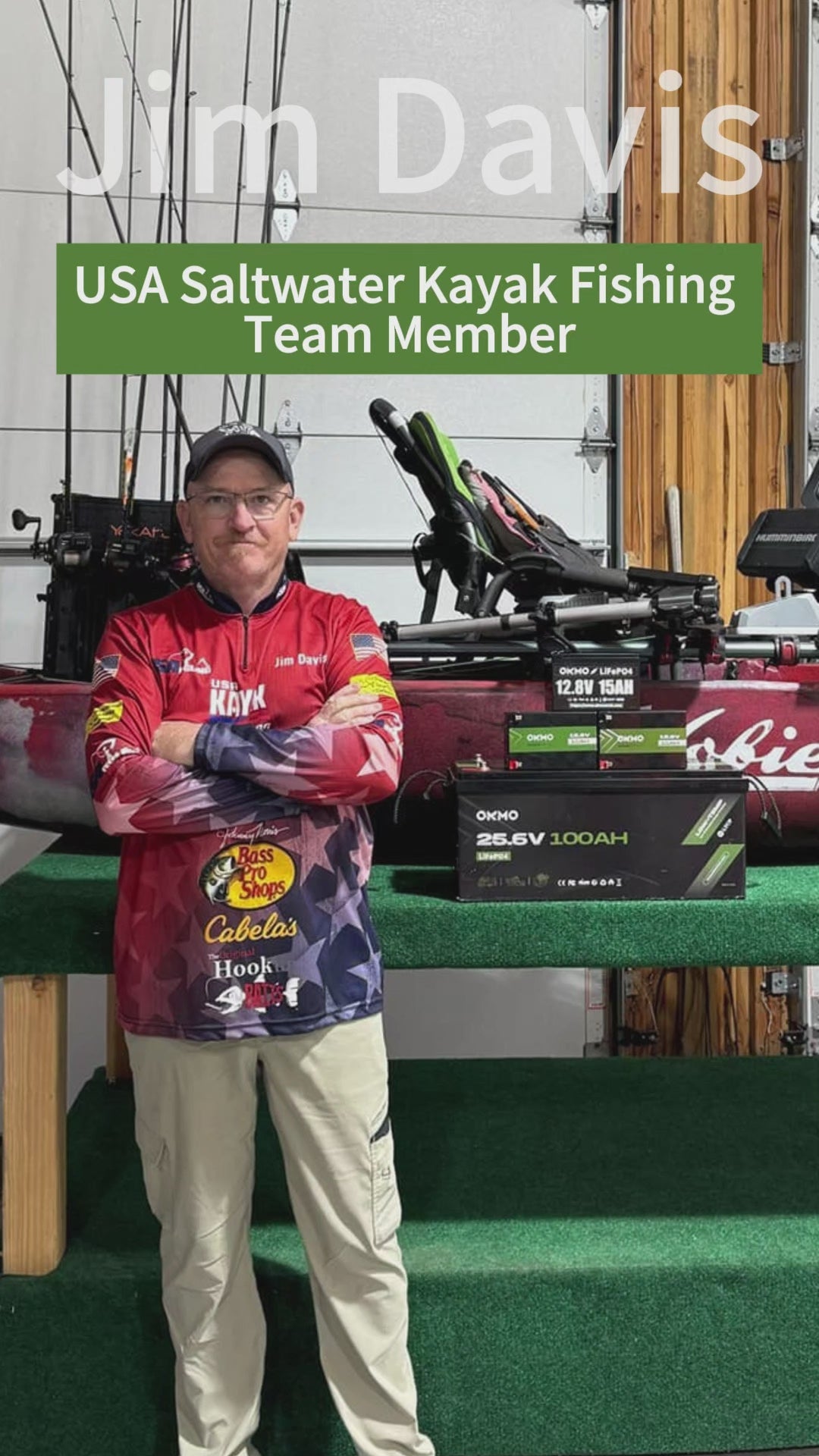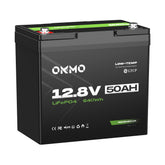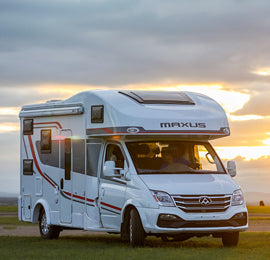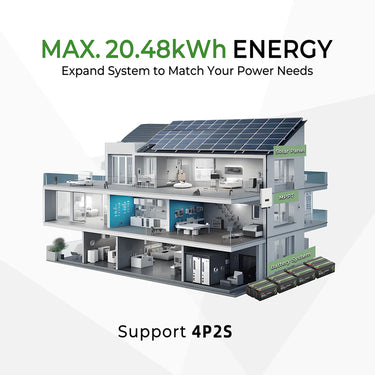Group 24 Deep Cycle Battery: The Ultimate Guide and Selection Tips

In the world of RVs, marine vessels, and solar energy storage systems, choosing the right battery is crucial for ensuring stable and continuous operation of equipment. Among various standard sizes, the Group 24 Deep Cycle Battery is an extremely common and versatile specification. This article serves as the ultimate guide, delving into everything about Group 24 deep cycle batteries, including their dimensions, applications, types, and how to choose the best battery for your needs.
What Is a Group 24 Deep Cycle Battery?
First, "Group 24" is a standardized code established by the Battery Council International (BCI) that defines the physical dimensions, terminal type, and placement of the battery. It does not specify the battery's capacity, technology, or performance but only its external shape to ensure it fits into battery compartments designed for this size.
"Deep cycle," on the other hand, describes the type of battery. Unlike starting batteries, which are primarily used for short, high-current bursts to start engines, deep cycle batteries are designed to provide sustained, stable lower power output and can withstand repeated deep discharges (typically down to 50% or more) and subsequent recharging without significantly affecting their lifespan.
 Key Specifications of Group 24 Batteries
Key Specifications of Group 24 Batteries
Understanding their physical dimensions and electrical characteristics is the first step in selection.
-
Dimensions (L x W x H): Approximately 10.25 inches x 6.75 inches x 9 inches (260mm x 173mm x 225mm). Before purchasing, be sure to measure your battery compartment to ensure sufficient space, and account for any additional space needed for wiring terminals.
-
Terminal Type: The most common type is the standard automotive SAE terminal (post-style threaded terminal), though some batteries may feature bolt terminals or other types. Confirming terminal compatibility with your device's cables is critical.
-
Weight: Weight varies significantly depending on the internal technology and capacity, typically ranging from 40 to 60 pounds (18 to 27 kilograms). Lithium-ion versions are much lighter than lead-acid versions.
-
Capacity: This is the most important electrical parameter.
-
Amp-Hour (Ah) Capacity: For Group 24 flooded lead-acid batteries, the rated capacity is typically between 70-85 Ah. This means it can discharge at 3.5A to 4.25A over 20 hours until the voltage drops to 10.5V.
-
Reserve Capacity: Another measure, usually around 140-180 minutes, indicates how long the battery can discharge at 25 amps until the voltage drops to 10.5V.
-
Primary Applications
Due to their balanced size and capacity, Group 24 deep cycle batteries are widely used in:
-
RVs and Camping: Powering interior lighting, water pumps, refrigerators, fans, and entertainment systems.
-
Marine Vessels: Serving as the "house battery" for boats, powering fish finders, radios, cabin lights, and electric trolling motors.
-
Solar Energy Storage Systems: Acting as storage units for small off-grid or backup solar systems.
-
Golf Carts and Utility Vehicles: Providing power for low-speed electric vehicles.
-
Mobile Audio Systems and Professional Equipment: Situations requiring stable, clean power sources.
 Types of Group 24 Deep Cycle Batteries
Types of Group 24 Deep Cycle Batteries
Technological advancements have introduced various battery chemistries for the Group 24 specification, each with its pros and cons.
-
Flooded Lead-Acid Batteries:
-
Pros: Lowest cost, mature technology, easily recyclable.
-
Cons: Require regular maintenance (adding distilled water), cannot be fully sealed (restricted installation angles), slower charging, shorter cycle life.
-
-
AGM Batteries:
-
Pros: Maintenance-free, sealed (can be installed at any angle), more resistant to vibration, faster charging than flooded batteries, longer cycle life, low self-discharge.
-
Cons: More expensive than flooded batteries.
-
-
Gel Batteries:
-
Pros: Similar to AGM, maintenance-free and sealed. May perform more stably in high-temperature environments.
-
Cons: Typically the most expensive, require very strict charging voltage compatibility.
-
-
-
Pros: Extremely lightweight (about 60% lighter than lead-acid), very long cycle life (5-10 times that of AGM), can be discharged to a higher depth (80-90% DoD) with almost no impact on lifespan, very fast charging, almost no self-discharge.
-
Cons: Highest initial cost. Many lithium batteries come with a built-in Battery Management System (BMS), making them a plug-and-play upgrade option.
-
 How to Choose the Best Battery for Your Needs?
How to Choose the Best Battery for Your Needs?
-
Budget-Friendly Option: Choose flooded lead-acid batteries, but be prepared for maintenance.
-
Best Value for Money: AGM batteries are recommended for most users, offering a perfect balance of performance, lifespan, and maintenance-free operation.
-
Pursuing Ultimate Performance and Lifespan: If you prioritize lightweight, long lifespan, and don’t mind the upfront investment, lithium-ion batteries are the undisputed ultimate choice, especially for RV and marine applications.
Maintenance and Care Tips
-
Regular Charging: Avoid leaving the battery in a discharged state for extended periods.
-
Use a Smart Charger: Use a multi-stage smart charger designed for your battery type (lead-acid/lithium) to extend its lifespan.
-
Keep It Clean: Clean terminals and casing to prevent corrosion.
-
Safety First: Charge flooded batteries in a well-ventilated area to avoid the risk of hydrogen gas buildup.
 Conclusion
Conclusion
The Group 24 deep cycle battery is a versatile and reliable power source suitable for a wide range of applications, from recreational to professional. Understanding its specifications, types, and suitable scenarios is key to making an informed purchasing decision. Whether you choose an economical flooded battery, a balanced and reliable AGM battery, or a high-end advanced lithium-ion battery, there is always a Group 24 battery that meets your power needs, providing lasting energy for your adventures or daily applications.








